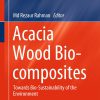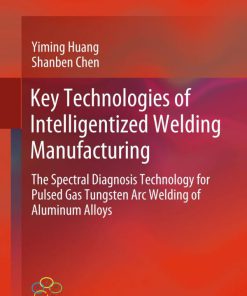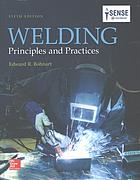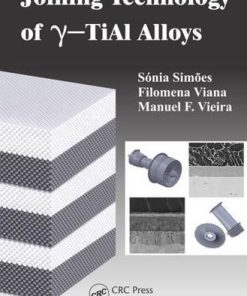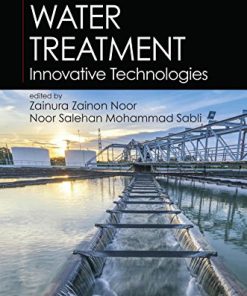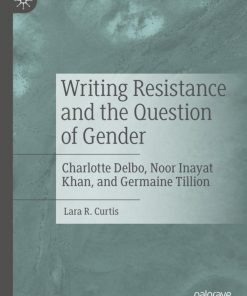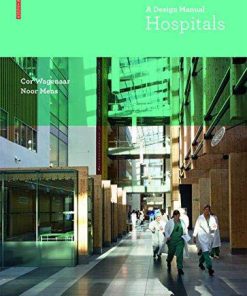Friction Stir Welding Dissimilar Aluminium Alloys 1st Edition by Noor Zaman Khan, Arshad Noor Siddiquee, Zahid Akhtar Khan 1138196754 9781138196759
$50.00 Original price was: $50.00.$25.00Current price is: $25.00.
Friction Stir Welding : Dissimilar Aluminium Alloys 1st Edition by Noor Zaman Khan, Arshad Noor Siddiquee, Zahid Akhtar Khan – Ebook PDF Instant Download/DeliveryISBN: 1138196754, 9781138196759
Full download Friction Stir Welding : Dissimilar Aluminium Alloys 1st Edition after payment.
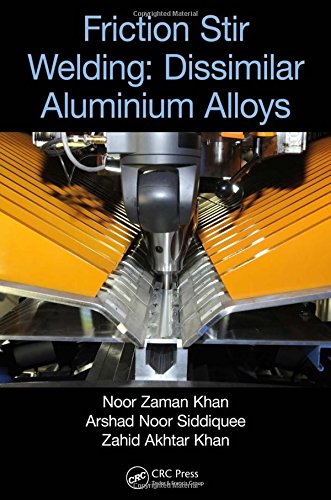
Product details:
ISBN-10 : 1138196754
ISBN-13 : 9781138196759
Author: Noor Zaman Khan, Arshad Noor Siddiquee, Zahid Akhtar Khan
The evolution of mechanical properties and its characterization is important to the weld quality whose further analysis requires mechanical property and microstructure correlation. Present book addresses the basic understanding of the Friction Stir Welding (FSW) process that includes effect of various process parameters on the quality of welded joints. It discusses about various problems related to the welding of dissimilar aluminium alloys including influence of FSW process parameters on the microstructure and mechanical properties of such alloys. As a case study, effect of important process parameters on joint quality of dissimilar aluminium alloys is included.
Friction Stir Welding : Dissimilar Aluminium Alloys 1st Table of contents:
Chapter 1: Introduction
1.1 Introduction
1.2 Demand of Aluminum Alloys in Industries
1.3 Joining of Aluminum Alloys
1.4 Joining of Dissimilar Aluminum Alloys
1.5 FSW of Aluminum Alloys
1.6 FSW of Dissimilar Aluminum Alloys
1.7 Rationale and Importance of Dissimilar Aluminum Welding Using FSW
1.8 Benefits of This Text
Chapter 2: Friction Stir Welding Process
2.1 Introduction to Solid State Welding
2.2 Principle of Solid State Welding
2.3 Introduction to FSW Technique
2.4 Historical Background of FSW
2.5 FSW Process
2.6 Advantages and Disadvantages of the FSW Process
2.6.1 Advantages
2.6.2 Disadvantages of the FSW Process
2.7 Applications of FSW
2.7.1 Shipbuilding and Marine Industries
2.7.2 Aerospace Industry
2.7.3 Railway Industry
2.7.4 Automobile
2.7.5 Construction Industry
2.7.6 Electrical Industry
2.8 Commercialization of FSW
2.8.1 Shipbuilding
2.8.2 Aerospace
2.8.3 Railways
2.8.4 Automobile
2.9 FSW Tool Material
2.10 FSW Tool Design
2.10.1 Shoulder Diameter
2.10.2 Pin Geometry
2.11 FSW Process Parameters
2.11.1 Rotational and Traverse Speeds
2.11.2 Tool Tilt Angle
2.11.3 Plunge Depth
2.11.4 Tool Pin Offset
2.12 FSW Experimental Setup
2.12.1 FSW Machine
2.12.2 FSW Work Fixture
2.13 Macroscopic and Microscopic Weld Zone in FSW
2.13.1 Static Recovery
2.13.2 Static Recrystallization
2.13.3 Dynamic Recovery
2.13.4 Dynamic Recrystallization
2.13.4.1 Threadgill’s Classification of Microscopic Weld Zone
2.13.4.2 Arbegast’s Classification for the Processing Zone
2.14 Defects in FSW
2.14.1 Hooking Defect
2.14.2 Tunneling Defect
2.14.3 Kissing Bond
2.14.4 Incomplete Root Penetration
2.15 Measurement of Responses for Defining Weld Quality
2.15.1 Tensile Testing
2.15.2 Impact Testing
2.15.3 Fatigue Testing
2.15.4 Preparation for Microstructural Investigation
2.15.5 Microhardness Measurement
Chapter 3: Friction Stir Welding of Aluminum Alloys
3.1 Overview
3.2 Problems Related to the Welding of Aluminum Alloys
3.3 FSW of Aluminum Alloys
3.4 FSW of 2xxx Series Aluminum Alloys
3.5 FSW of 5xxx Series Aluminum Alloys
3.6 FSW of 6xxx Series Aluminum Alloys
3.7 FSW of 7xxx Series Aluminum Alloys
Chapter 4: Friction Stir Welding of Dissimilar Aluminum Alloys
4.1 Introduction
4.2 Issues with Dissimilar Materials Welding
4.3 Major Challenges in the FSW of Dissimilar Materials
4.4 Joining of Dissimilar Aluminum Alloys
4.5 FSW of Different Alloys
4.6 FSW of 5xxx–6xxx Series Aluminum Alloys
4.7 FSW of 2xxx–7xxx Series Aluminum
4.8 FSW of 6xxx–7xxx Series Aluminum
Chapter 5: Case Study on AA5083–AA6063 Dissimilar Welding
5.1 Introduction
5.2 Issues in Dissimilar Materials Joining by FSW
5.3 Typical Pair of Dissimilar Materials
5.4 Case Study of AA5083 and AA6063 Dissimilar Welding
5.4.1 Experimentation Performed in the Investigation
5.4.2 Analysis of Defect Formation
5.4.2.1 Tunneling Defect
5.4.2.2 KB Defect
5.4.3 Important Parameters and Their Effects on Material Being Consolidated
5.4.4 Effect of Pin Offset on Defect Formation
5.4.4.1 Effect of Pin Offset on Tunneling Defect
5.4.4.2 Effect of Pin Offset on KB Defect
5.4.5 Effect of Plunge Depth on the Defect Formation
5.4.6 Effect of Plunge Depth and Pin Offset on Tensile Strength
5.5 Summary of the Case Study
People also search for Friction Stir Welding : Dissimilar Aluminium Alloys 1st:
advantages of friction stir welding
self reacting friction stir welding
bobbin tool friction stir welding
underwater friction stir welding
micro friction stir welding
Tags: Stir Welding, Dissimilar Aluminium, Noor Zaman Khan, Arshad Noor Siddiquee, Zahid Akhtar Khan
You may also like…
Technique - Oil and Gas Technologies
Engineering
Biology and other natural sciences
Joining Technology of gamma-TiAl Alloys First Edition Sonia Luisa Dos Santos Simoes
Politics & Philosophy - Social Sciences
An American family a memoir of hope and sacrifice First Edition Khan
Poetry - American Poetry
Arts - Architecture


